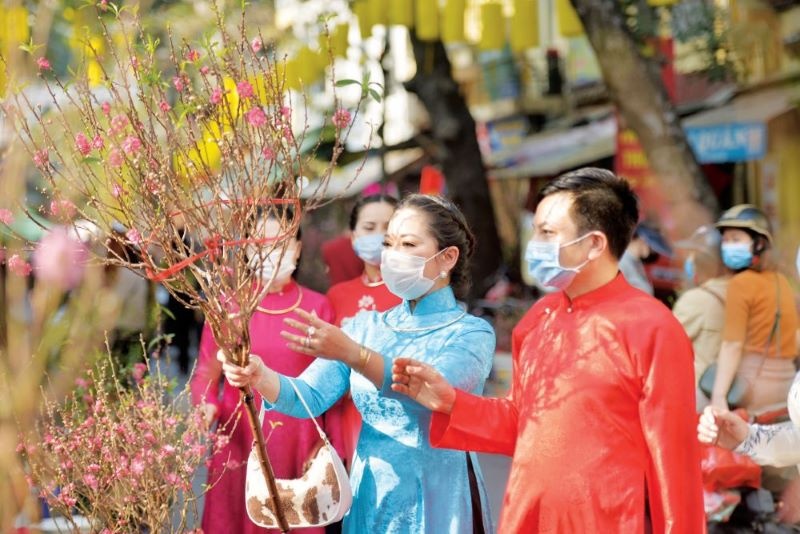Hanoi will focus on building, developing, and positioning its brand of UNESCO’s “Creative City” and “The City for Peace”, in which the cultural industry will be a key area contributing 10% to the city’s GRDP by 2045.
This is the content of the Resolution on Cultural Industry development, signed by the Secretary of Hanoi Party Committee, Dinh Tien Dung, on February 22.
The resolution aimed to realize the capital city’s ambitious target of making Hanoi be a model of economic and cultural development in the Asia Pacific region in the next years.
| Hanoi will become a model of an economic and cultural hub in the Asia Pacific region in the near future. Photo: Pham Hung |
Fostering cultural industry to be a top priority
Under the Resolution, which is set for the 2021-25 period with an orientation to 2030 and a vision to 2045, the Hanoi Party Committee identifies the task of fostering cultural industry as the top priority in the capital’s socio-economic development strategy in the coming time.
“The cultural industry is set to become a spearhead economic sector, effectively contributing to GRDP growth, generating incomes and jobs for people as well as promoting the development of other economic fields,” Dung noted.
According to the Resolution, the development of cultural industry must be based on the principle of ensuring harmony between conservation and development.
Hanoi needs to promote its strength as a ‘thousand-year-old capital’ with many well-preserved cultural values, but it also needs to promote international integration and absorb the cultural quintessence of humanity.
In addition, the Resolution emphasized that “promoting the development of the cultural industry is the responsibility of the entire political system, all sectors, all departments, as well as the whole society with the spirit that ‘investing in culture means investing in sustainable development”.
Hanoi will focus on investing in a number of areas of great potential and advantages such as cultural tourism; performing arts; crafts; design; advertisement; fine arts, photography and exhibitions; film; fashion; cuisine; software, entertainment and games; television and radio, publishing, among others.
| The newly established Mailand creative city in Hanoi. Photo: Viet Tam |
By 2025, the cultural industry will become an important economic sector, creating a driving force to promote the development of the economy, culture and society of the capital. In order to achieve that goal, Hanoi will improve its infrastructure in a synchronous and modern manner; invest in the cultural projects, which are associated with tourism development; well preserve available national monuments such as Thang Long Imperial Citadel, Temple of Literature, Co Loa relic, among others.
By 2030, the cultural industry will basically become a spearhead economic sector, striving to contribute about 8% to the capital’s GRDP. Hanoi may own some prestigious cultural products that are able to compete with other cities in the region. The capital of Vietnam will be the leading “Creative City” in Southeast Asia.
By 2045, the capital’s cultural industry will become a comprehensive spearhead economic sector, contributing about 10% to the city’s GRDP.
Striving for the achievement
|
The drawing titled “What’s Hanoi?” by Le Tien Dung won the “Hanoi is…” illustration contest launched by UNESCO Vietnam in 2021. The capital is in the imagination of a student who is living and studying in Ho Chi Minh City. |
The city will also focus on a number of tasks such as creating a favorable environment and policies to develop the cultural industry, building infrastructure, facilities and a creative cultural ecosystem with a cultural market and education system. Another objective is to create a generation of the public that appreciates traditional and modern cultural values.
“This is long-term work requires a lot of investment”, the resolution stated.
Hanoi became a member of the UNESCO’s Network of Creative Cities in October 2019, as a creative city in the field of design and is currently the only city in Vietnam to participate in this network.
With the advantage of concentrating intangible and tangible cultural heritages, Hanoi will continue to exploit and promote resources to create cultural spaces and creative communities, expand opportunities for creators, contribute to promoting the capital’s cultural values, and develop the capital into a major cultural center of the country.







